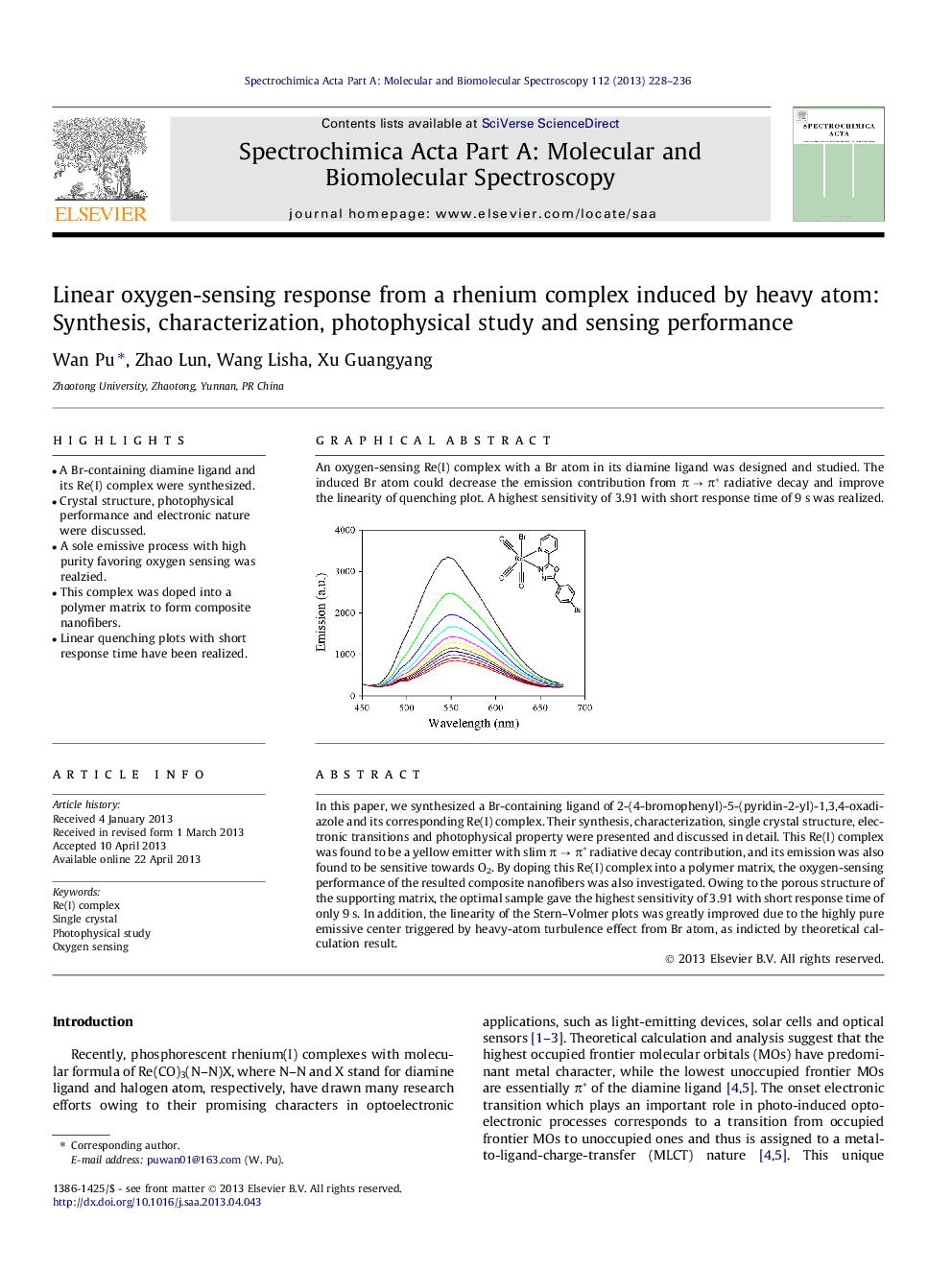| Article ID | Journal | Published Year | Pages | File Type |
|---|---|---|---|---|
| 1230740 | Spectrochimica Acta Part A: Molecular and Biomolecular Spectroscopy | 2013 | 9 Pages |
•A Br-containing diamine ligand and its Re(I) complex were synthesized.•Crystal structure, photophysical performance and electronic nature were discussed.•A sole emissive process with high purity favoring oxygen sensing was realzied.•This complex was doped into a polymer matrix to form composite nanofibers.•Linear quenching plots with short response time have been realized.
In this paper, we synthesized a Br-containing ligand of 2-(4-bromophenyl)-5-(pyridin-2-yl)-1,3,4-oxadiazole and its corresponding Re(I) complex. Their synthesis, characterization, single crystal structure, electronic transitions and photophysical property were presented and discussed in detail. This Re(I) complex was found to be a yellow emitter with slim π → π* radiative decay contribution, and its emission was also found to be sensitive towards O2. By doping this Re(I) complex into a polymer matrix, the oxygen-sensing performance of the resulted composite nanofibers was also investigated. Owing to the porous structure of the supporting matrix, the optimal sample gave the highest sensitivity of 3.91 with short response time of only 9 s. In addition, the linearity of the Stern–Volmer plots was greatly improved due to the highly pure emissive center triggered by heavy-atom turbulence effect from Br atom, as indicted by theoretical calculation result.
Graphical abstractAn oxygen-sensing Re(I) complex with a Br atom in its diamine ligand was designed and studied. The induced Br atom could decrease the emission contribution from π → π* radiative decay and improve the linearity of quenching plot. A highest sensitivity of 3.91 with short response time of 9 s was realized.Figure optionsDownload full-size imageDownload as PowerPoint slide
